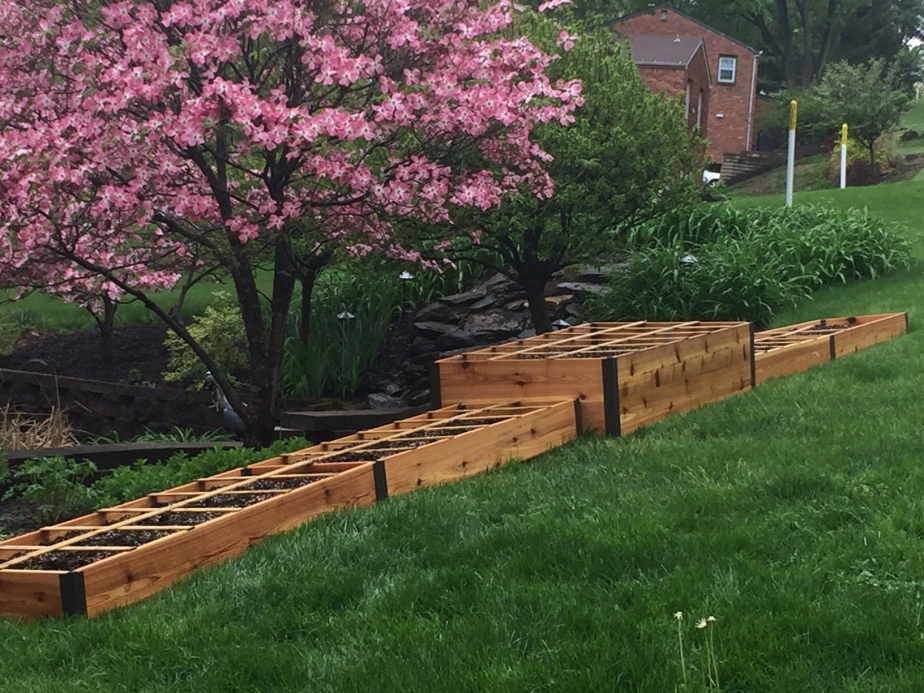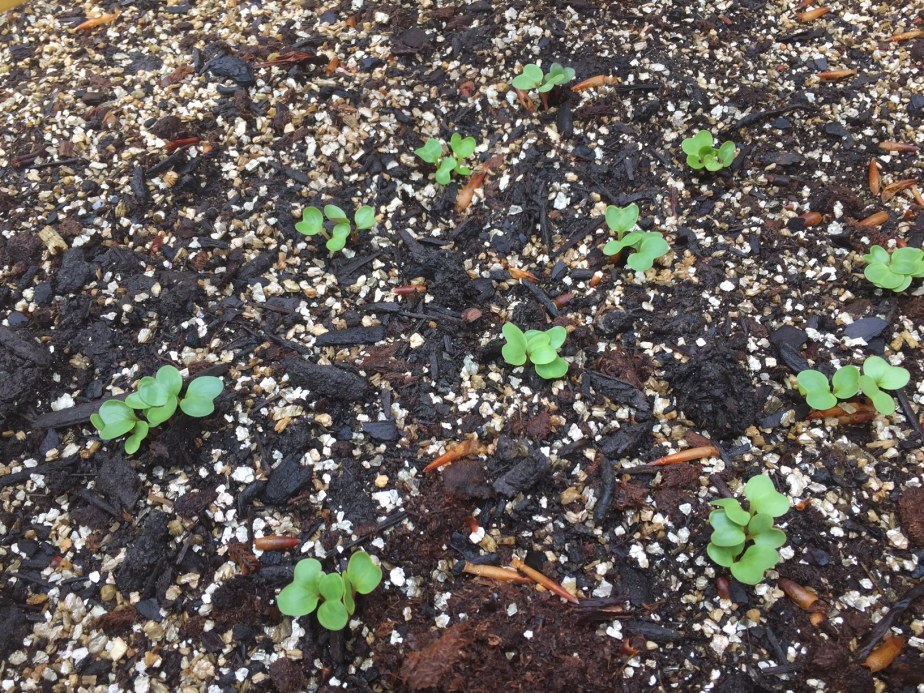The photo above was from my first roll of home-processed color film last year, and I’m looking forward to the summer this year. Even though this was a mild winter, I am realizing as the first good weekends of spring roll around that once again i struggled with some version of Seasonal Affective Disorder – the Winter Blues. I have got to find a way to combat the feelings of “Blah!” during the winter.
As i wrote about last June, this happens to me every year. Common themes: I take less photos, I’m less active, I drink too much and watch soccer, movies, and listen to music instead of being active. But after a couple weekends of being outside and working in the yard and playing golf, I’m feeling refreshed and motivated. Ironic that it happened right around Easter, the season of renewal and rebirth.
One of the things that has me outside this spring is another attempt at gardening. The first couple years we lived in this house, we planted tomatoes and peppers, but the chipmunks and deer enjoyed them more than we did. The deer also devoured most of our ornamental flowers as well, including deer-resistant plants like rhododendron.
Last year, I was finally able to deter the deer in the yard, and I made progress on the chipmunks and will continue that battle, so I decided to give gardening another attempt. A deciding factor was the price of certain greens last year. For example, I really like rapini, or broccoli rabe. It was selling for $7 a bunch last year, and the quality of the flavor was disappointing. So why not try to grow my own?
I didn’t want to put in a garden plot, I don’t have a roto-tiller, and I don’t like pulling weeds. So I started applying my Lean process-improvement mindset to having a vegetable garden. I remembered having a book years ago called Square Foot Gardening, so I tracked down a new copy. After reading through the book, I believe that Square Foot Gardening, or SFG, could accurately be described as Lean Gardening.
SFG uses 80% less space, has little to no weeds, and allows you to grow a lot more types of plants in that smaller space. As Mrs. Outspoken and I started discussing what plants we’d want to grow, I had a very long list of candidates. So we ranked them from 1 to 5 in priority, and planted all of the top priority plants, either hers or mine (otherwise, beets and radishes wouldn’t have made the cut), and then planted the top scoring remaining plants.
When all was said and done, there were 31 seed packets on the dining room table. “You’re never going to have room for all those” was the Mrs.’ response. But that’s the amazing thing about SFG – not only do we have the space, I already had it planned out, and we probably have 2-3 years worth of seeds.

We installed one 3’x6’x14″ and two 2’x12’x7″ raised beds. Those beds provide us the opportunity to plant 66 squares, with each square possible of providing three harvests per year. So after laying out our plants, I had room for eight additional plants, which will be comprised of tomatoes and herbs. Here’s what our garden layout looks like on paper:

I planted 14 squares in a little over an hour last Sunday morning, and five more on Monday night. Of those 14, I think 11 have a second square to be planted, but I want to stagger those so the crops ripen in a staggered fashion. For example, there are 16 carrots in a square, and I plan to plant 3 varieties of carrots, 2 squares each. If I planted all of them this weekend, they would likely all be ready around the same time. I wouldn’t need 96 carrots at one time!

This is also very Lean in it’s concept: produce only what is needed when it is needed. So I planted three squares to start with, but then will plant one square per week of carrots for the next three weeks. Even that may be too much, but I’m just in my first “do” phase of this round of gardening. I’ll check the results and make adjustments as needed.
Likewise, I’ll be staggering the beets. I’m the only one who eats them, so having 4 squares of beets, each producing 9 beets, becoming ready for harvest simultaneously makes no sense. But this is how we’ve traditionally planted gardens. Part of that is probably because way back in the old days, people canned all the excess. So having waves of crops ripen actually smoothed out the canning process, because you needed some volume of veggies to can, and also, everything was getting canned, so it probably made sense to just keep the harvest flowing to maximize the canning process.
An interesting part of this was that it seems like the hardest and most time consuming aspect so far – other than perhaps deciding what to plant and where to buy my seeds (the whole “Plan” part of Lean and PDCA), was the actual process of preparing the soil. I also find this interesting, because in real life we often don’t spend enough time preparing the soil – preparing for change and growth. In Lean, this is often referred to as “nemawashi” – which literally translates to “going around the roots”, as in placing new soil around the roots of a plant to prepare it for transplanting. Mixing up 42 cubic feet of peat moss, vermiculite, and 5 different compost blends took me all of three hours, and a lot of sweat. That’s after probably 5-6 hours of rounding up all the ingredients.
The soil mixture I was using – which is defined in the SFG book as “Mel’s Mix” – is apparently so uncommon in my area, that I had to special order the vermiculite. Anywhere I asked for it, when the asked me what i was doing, tried to steer me to “something that will work great” – but they didn’t stock what i wanted. Lack of demand or too large of a minimum buy (which translates back to lack of demand) was the primary reason.
So I’ve spent weeks planning and thinking about how to do this project. Probably a couple days actually building the foundations of the garden – the raised beds and the soil. I’ll spend what appears to be hours planting seeds. Then I’ll spend probably an equal amount of hours building trellises to support the plants once they’re growing. All to reap a semi-continuous harvest of organic vegetables well into fall – if all goes well.
Five days later: We had our first sprouts! Radishes, Rapini, Mizuna, and Arugula all started pushing through! It may sound silly, but I was really excited to see my first “crops” start growing!

And the great thing is – most of the hard work done to lay the foundation this year makes next spring’s garden even easier. I see applying Lean in my workplace, and in my life, in much the same light. Do the hard work up front, do it right, and there’s a steady stream of rewards. Prepare the soil, then as the work progresses, build a support system to continue the growth. After all the hard work, you just need to keep up with the harvest and sustain, at least until it’s time to make another improvement.
So do the right thing early in the process; do the hard work, and prepare the soil. Have the tough discussions, and don’t settle for the easier, more readily available alternatives. Be different, and dare to be great.
In work, life, and love, getting your hands dirty and preparing the soil will usually yield a bountiful harvest.
